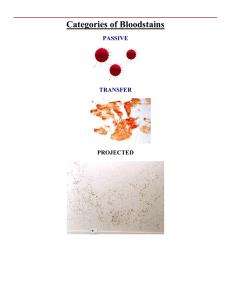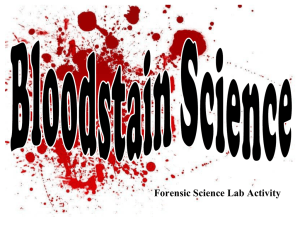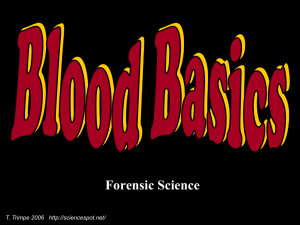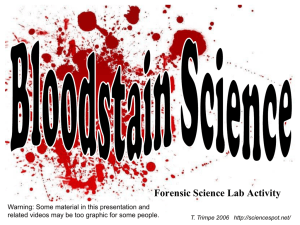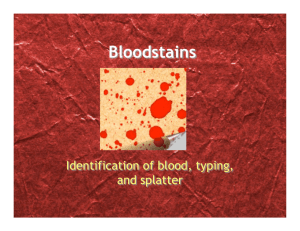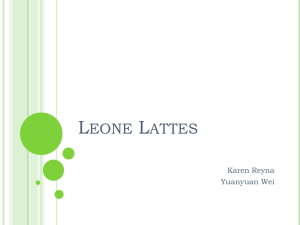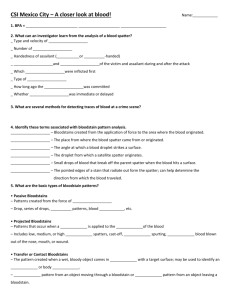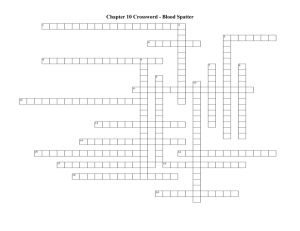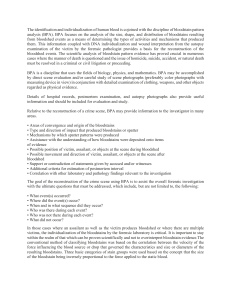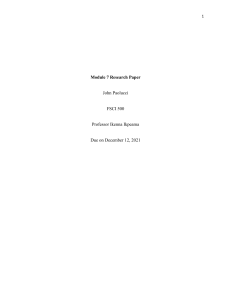Bloodstains 4
advertisement
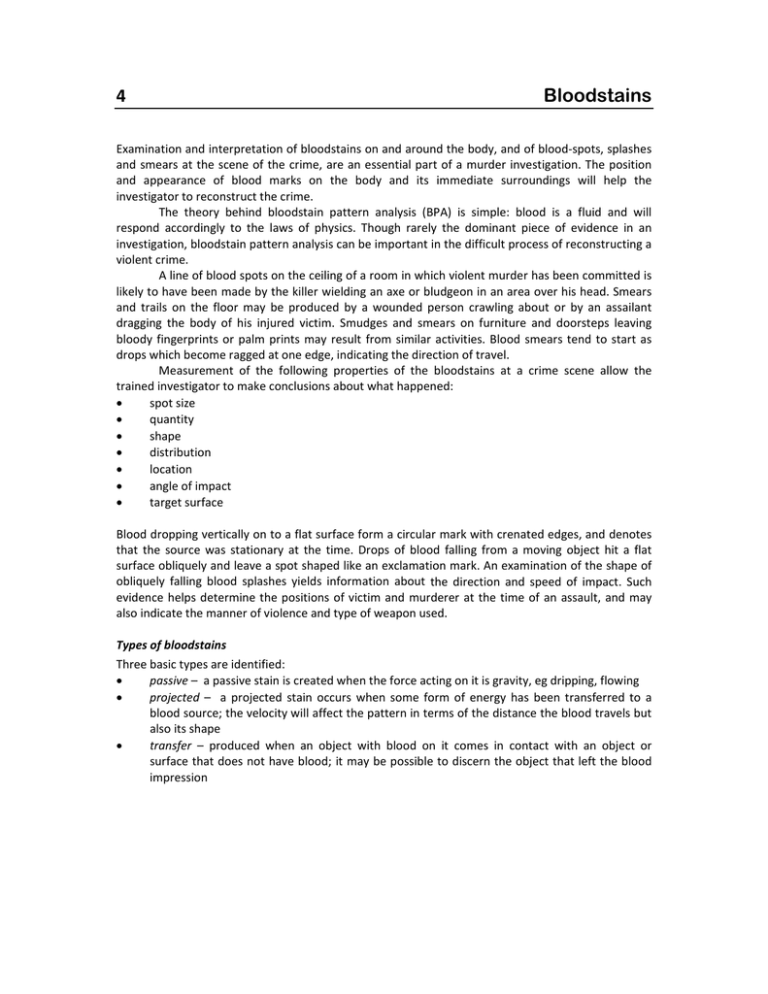
4 Bloodstains Examination and interpretation of bloodstains on and around the body, and of blood‐spots, splashes and smears at the scene of the crime, are an essential part of a murder investigation. The position and appearance of blood marks on the body and its immediate surroundings will help the investigator to reconstruct the crime. The theory behind bloodstain pattern analysis (BPA) is simple: blood is a fluid and will respond accordingly to the laws of physics. Though rarely the dominant piece of evidence in an investigation, bloodstain pattern analysis can be important in the difficult process of reconstructing a violent crime. A line of blood spots on the ceiling of a room in which violent murder has been committed is likely to have been made by the killer wielding an axe or bludgeon in an area over his head. Smears and trails on the floor may be produced by a wounded person crawling about or by an assailant dragging the body of his injured victim. Smudges and smears on furniture and doorsteps leaving bloody fingerprints or palm prints may result from similar activities. Blood smears tend to start as drops which become ragged at one edge, indicating the direction of travel. Measurement of the following properties of the bloodstains at a crime scene allow the trained investigator to make conclusions about what happened: spot size quantity shape distribution location angle of impact target surface Blood dropping vertically on to a flat surface form a circular mark with crenated edges, and denotes that the source was stationary at the time. Drops of blood falling from a moving object hit a flat surface obliquely and leave a spot shaped like an exclamation mark. An examination of the shape of obliquely falling blood splashes yields information about the direction and speed of impact. Such evidence helps determine the positions of victim and murderer at the time of an assault, and may also indicate the manner of violence and type of weapon used. Types of bloodstains Three basic types are identified: passive – a passive stain is created when the force acting on it is gravity, eg dripping, flowing projected – a projected stain occurs when some form of energy has been transferred to a blood source; the velocity will affect the pattern in terms of the distance the blood travels but also its shape transfer – produced when an object with blood on it comes in contact with an object or surface that does not have blood; it may be possible to discern the object that left the blood impression 4. Bloodstains EXERCISE 1 Which tyype of bloodsstain do you think the folllowing imag ges are? nality of staiins Direction Projecteed blood will form a shape when hittting a flat su urface that iis also indicaative of the direction from it came. The narrower en nd of the “eexclamation mark” shap pe of the staain is pointin ng in the n of travel (i.e. away form m the sourcee). direction EXERCISE 2 Identify the direction n of travel of f the projecteed bloodstain n above. ojected spotss can identifyy their point source as be elow. Tracing tthe paths of multiple pro An excelllent webpagge showing im mages of acttual bloodstaains (in colou ur) is http://w www.bloodsp patter.com/B BPATutorial.h htm. The im mages used here come fro om this sourcce. Introduction To Forensic Science FS4.2
